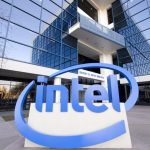Intel plans fresh round of layoffs following the biggest quarterly loss in company history

Late last month, Intel reported its first-quarter results with a staggering 133 percent annual decline in the earnings per share, making it the biggest quarterly loss in company history. The company revenue also fell by nearly 36 percent to $11.7 billion.
Fast forward a little over a week later, Oregon Live reported that Intel, the largest corporate employer in the state of Oregon, is planning a fresh wave of layoffs in the wake of a sharp decline in the company’s revenue over the last six months. The chipmaker blamed a weak global economy.
“We are focused on identifying cost reductions and efficiency gains through multiple initiatives, including some business and function-specific workforce reductions in areas across the company,” Intel said in a written statement. “These are difficult decisions, and we are committed to treating impacted employees with dignity and respect,” Intel said.
Dylan Patel of the technology research firm SemiAnalysis first reported the pending job cuts over the weekend in a post on Twitter, Oregon Live said.
“Very unfortunate news, but massive layoffs at Intel coming! Intel’s Datacenter and Client computing groups are receiving ~10% budget cuts It’s up to divisions to figure out how to cut Given fixed costs, means as much as 20% layoffs in groups LTD (process node) unaffected,” Patel tweeted.
Very unfortunate news, but massive layoffs at Intel coming!
Intel's Datacenter and Client computing groups are receiving ~10% budget cuts
It's up to divisions to figure out how to cut
Given fixed costs, means as much as 20% layoffs in groups
LTD (process node) unaffected$INTC— Dylan Patel (@dylan522p) May 7, 2023
According to state workforce agency filings, Intel announced job cuts last fall and let go of over 500 employees in California. Although it also laid off some employees in Oregon, the company did not file a similar report, indicating that the layoffs were a smaller proportion of the local workforce. Intel has over 22,000 employees at its campuses in Washington County.
Intel has faced challenges in recent years due to a significant decrease in demand for the microprocessors it supplies to PCs and data centers. In the past six months, sales have decreased by 38%, which is attributed to the slower economy and reduced consumer and business spending. During the pandemic, many individuals and companies had already purchased computers in advance, contributing to the sales decline.
Intel is one of the many tech companies that have implemented cost-cutting measures in recent months as concerns grow over the global economic slowdown, the possibility of a looming recession, and the impact of generative AI. Last week, Shopify announced it was laying off more than 2,000 employees, or 20% of its workforce.
Also last week, video game developer Unity Software also announced it was laying off 600 employees, about 8% of its workforce, according to a filing with the Securities and Exchange Commission (SEC). Lyft also laid off 1,072 workers or 26% of its workforce, just a month after the founders stepped down.
Tech giants like Meta, Google’s Alphabet, and Nvidia have all taken measures to rein in spending. Other companies like Coinbase, Shopify, Netflix, and Twilio have also announced layoffs. In March, Facebook-parent company Meta announced it would cut 10,000 jobs, just four months after it let go of 11,000 employees, making the social giant the first Big Tech company to announce a second round of mass layoffs.
The global economic downturn that started in the second quarter of 2022 is beginning to have a major impact on tech companies. At least 629 tech companies have let go of 185,136 workers, according to Layoffs.FYI, a site that has been tracking all tech layoffs using data compiled from public reports.
Founded in 1968, Intel is best known for its microprocessors, which are widely used in personal computers, laptops, servers, and other computing devices. The company also produces a range of other hardware components, such as motherboard chipsets, network interface controllers, solid-state drives, and graphics processing units (GPUs).

